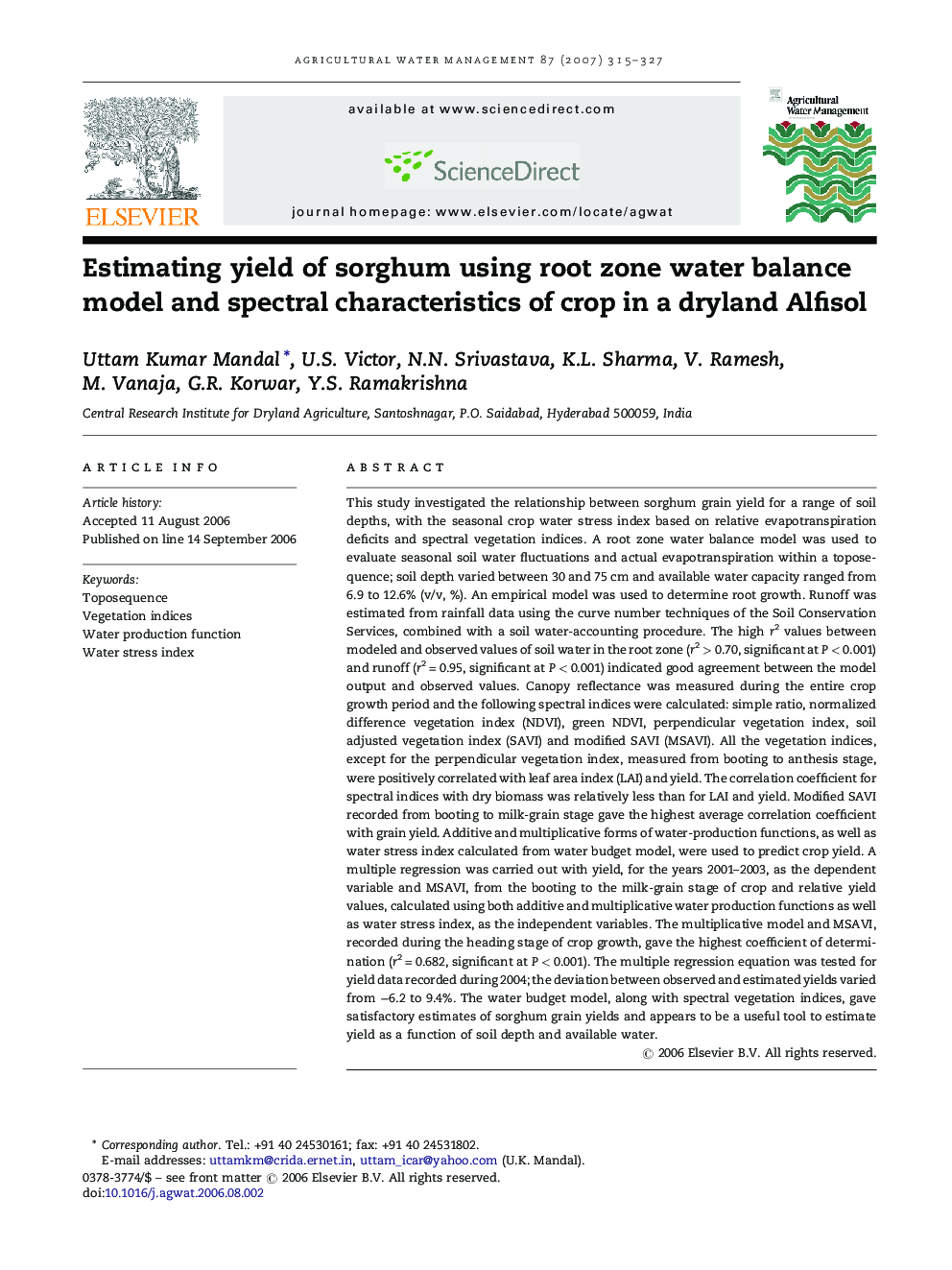| کد مقاله | کد نشریه | سال انتشار | مقاله انگلیسی | نسخه تمام متن |
|---|---|---|---|---|
| 4480443 | 1316494 | 2007 | 13 صفحه PDF | دانلود رایگان |

This study investigated the relationship between sorghum grain yield for a range of soil depths, with the seasonal crop water stress index based on relative evapotranspiration deficits and spectral vegetation indices. A root zone water balance model was used to evaluate seasonal soil water fluctuations and actual evapotranspiration within a toposequence; soil depth varied between 30 and 75 cm and available water capacity ranged from 6.9 to 12.6% (v/v, %). An empirical model was used to determine root growth. Runoff was estimated from rainfall data using the curve number techniques of the Soil Conservation Services, combined with a soil water-accounting procedure. The high r2 values between modeled and observed values of soil water in the root zone (r2 > 0.70, significant at P < 0.001) and runoff (r2 = 0.95, significant at P < 0.001) indicated good agreement between the model output and observed values. Canopy reflectance was measured during the entire crop growth period and the following spectral indices were calculated: simple ratio, normalized difference vegetation index (NDVI), green NDVI, perpendicular vegetation index, soil adjusted vegetation index (SAVI) and modified SAVI (MSAVI). All the vegetation indices, except for the perpendicular vegetation index, measured from booting to anthesis stage, were positively correlated with leaf area index (LAI) and yield. The correlation coefficient for spectral indices with dry biomass was relatively less than for LAI and yield. Modified SAVI recorded from booting to milk-grain stage gave the highest average correlation coefficient with grain yield. Additive and multiplicative forms of water-production functions, as well as water stress index calculated from water budget model, were used to predict crop yield. A multiple regression was carried out with yield, for the years 2001–2003, as the dependent variable and MSAVI, from the booting to the milk-grain stage of crop and relative yield values, calculated using both additive and multiplicative water production functions as well as water stress index, as the independent variables. The multiplicative model and MSAVI, recorded during the heading stage of crop growth, gave the highest coefficient of determination (r2 = 0.682, significant at P < 0.001). The multiple regression equation was tested for yield data recorded during 2004; the deviation between observed and estimated yields varied from −6.2 to 9.4%. The water budget model, along with spectral vegetation indices, gave satisfactory estimates of sorghum grain yields and appears to be a useful tool to estimate yield as a function of soil depth and available water.
Journal: Agricultural Water Management - Volume 87, Issue 3, 16 February 2007, Pages 315–327